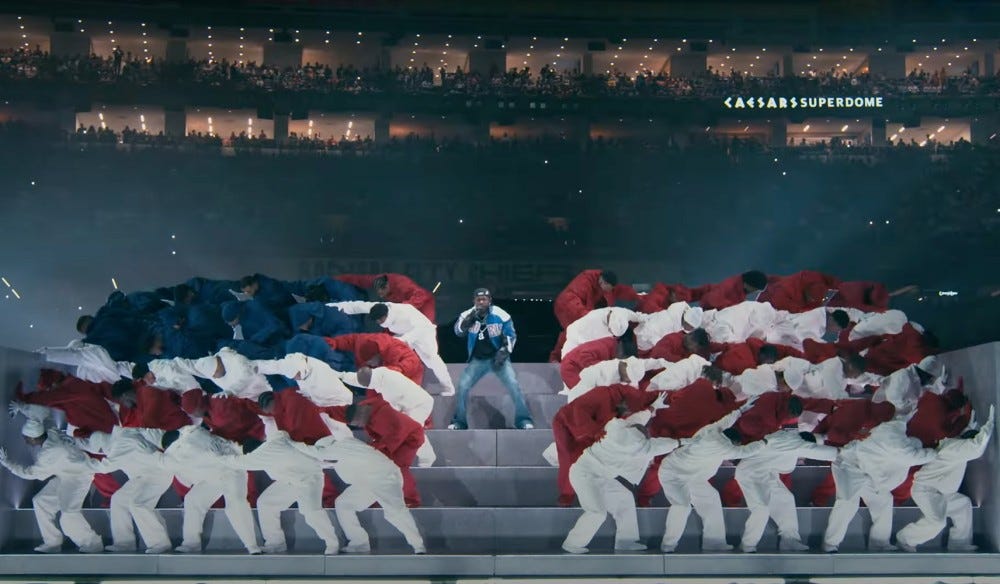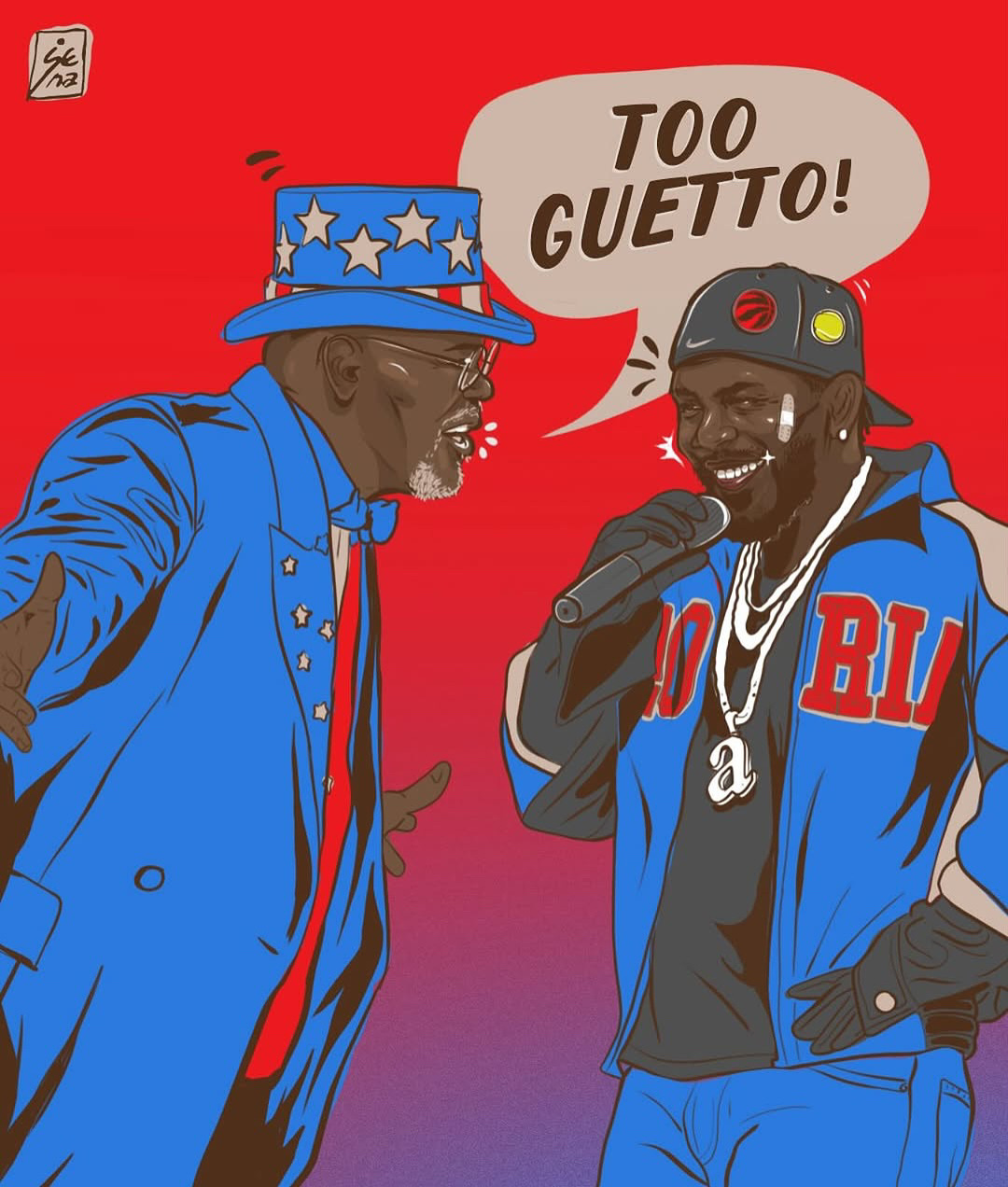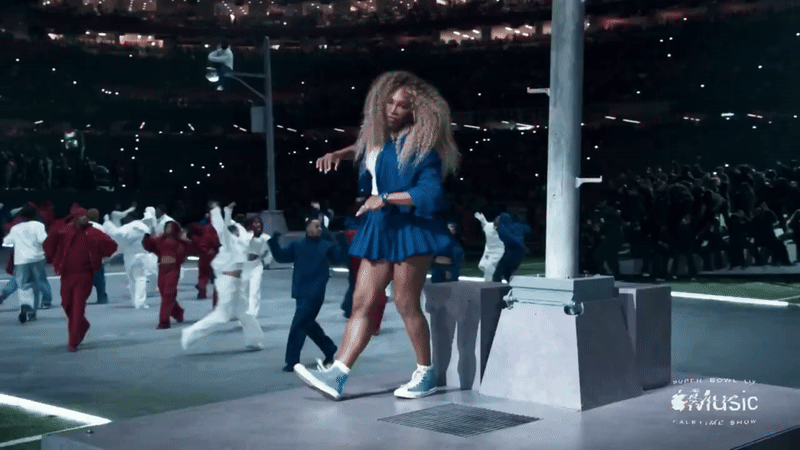Kendrick Lamar is Here to Bring to Division
If you were hoping for unity & positivity, you picked the wrong guy.
Do you think I came to bring peace on earth? No, I tell you, but division. From now on there will be five in one family divided against each other, three against two and two against three.
Kendrick Lamar did not use the stage of Super Bowl to "heal the nation" or "bring us all together" or any other trite and gutless sentiment. He came to highlight the divisions and widen them. As he declared in his opening lines "The Revolution is about to be televised. You picked the right time but the wrong guy."
Lamar’s selection as the headliner was already something that felt divine or, at least, serendipitous. New Orleans is the city that gave the world Lil Wayne, so the decision to center a Compton-born poet over a hometown legend was perceived by many as a slight. But this moment needed more than local pride; it needed national reflection and there is not an artist in the world that understands the importance of this particular platform. If there was fire to be kindled, Lamar did not hesitate to strike a match.
Even the stage itself was a critique. The spotlight began on a 1980s Buick GNX—iconic in hip-hop history— where Kendrick knelt, like Colin Kaepernick, before the doors of the car flung open and a troop of dancers, decked in the colors of the American flag, spilled out like clowns.
Once the camera pulled back you could see the set designed to resemble a PlayStation controller, that flashed the cheat code for the Grand Theft Auto "Godmode". This is all a game; the set, the Super Bowl, the United States of America. Defined by winners and losers.
If you missed the imagery, you were in luck. Samuel L. Jackson, taking the mantle of Uncle Sam, was there to explain it, underscoring the performance with satirical interjections, embodying the reality of patriotism for show and critique of Black identity.
Lamar’s performance of “Not Like Us" - already iconic for its demolition of Drake - took on a higher dimension on this stage as it has risen to cultural ubiquity. It has transcended an industry feud and rap beef; it has become a broader metaphor for authenticity versus artifice, for community versus commodification. Serena Williams, a figure whose presence alone speaks to the intersection of race, power, and sport, executed a crip walk—an an assertion of identity, of lineage, of unapologetic presence.
There is a lineage in America of people whose parents said “Y’know, I never really understood jazz” who now dismiss hip-hop, as if it's the fault of the music. The moral majority that completely, totally, aggressively does not understand art.
I don’t mean they don’t like art. That would imply an awareness of it as an aesthetic system one can either engage with or reject. I mean that when presented with art, they experience a kind of epistemological seizure, like an old macbook trying to keep open 27 tabs on Google Chrome.
It was an entirely predictable reaction of Trump supporters to Kendrick Lamar’s halftime performance. By “reaction,” I don’t just mean the garden-variety Facebook belch of “worst halftime show ever” that gets applied to literally anything that isn’t a geriatric white rock band, but the deeper, more fundamental incomprehension—the way Lamar’s performance registered as something they don't understand, and therefore, completely threatening.







